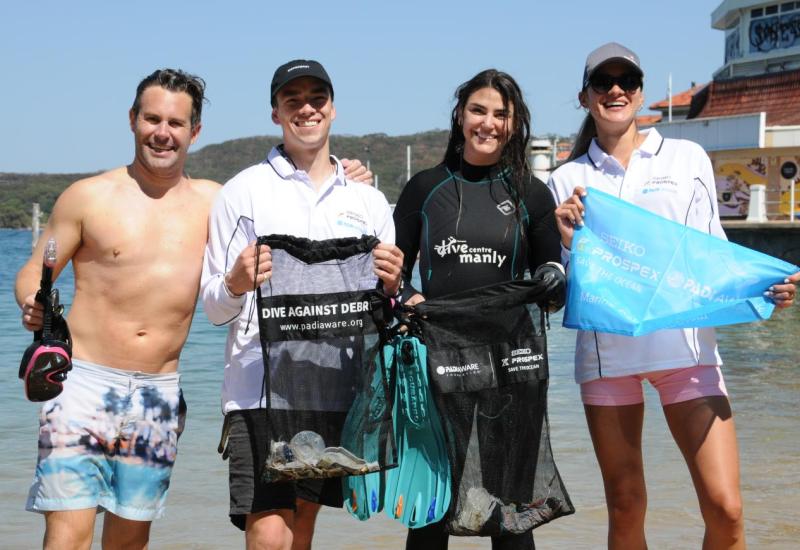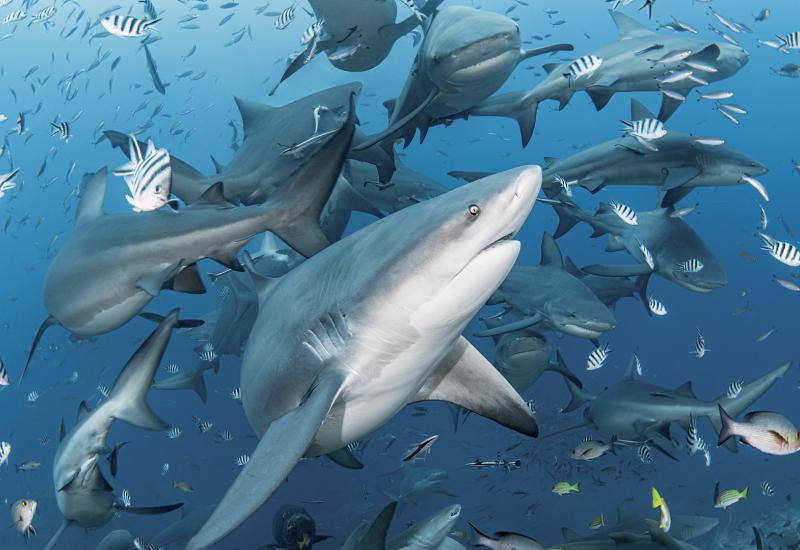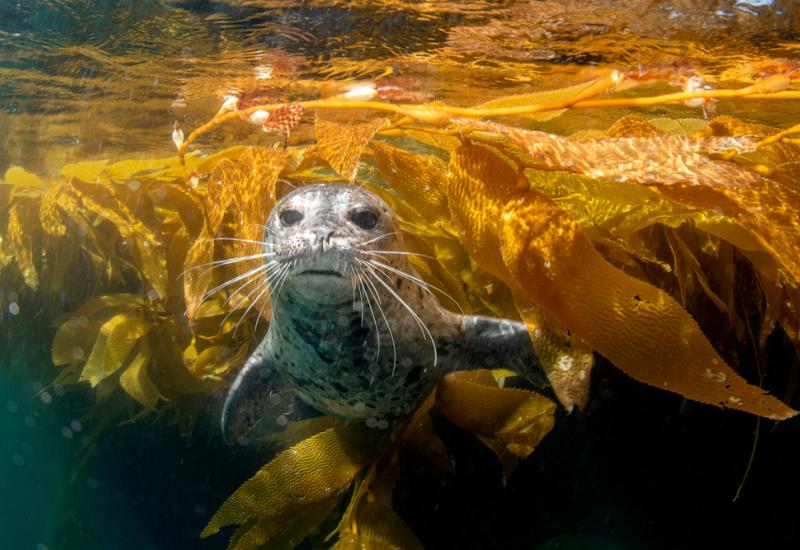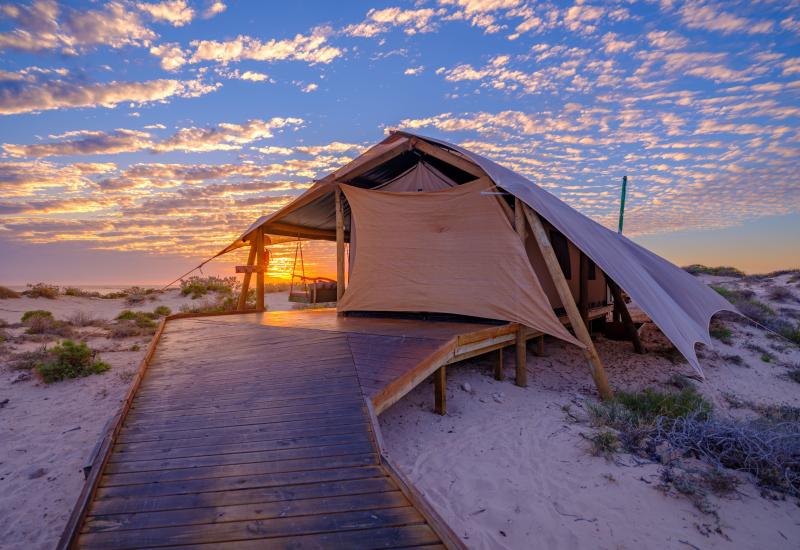Queensland, Australia: Great Barrier Reef and Coral Sea

Photography by Doug Perrine/Innerspace Visions
Diving the Great Barrier Reef. It seems like every non-diver asks: "Have you done it?" If you have, you've got bragging rights. If you haven't, you've probably given the solemn yet optimistic response, "No. Not yet ..."
Geographically speaking, Queensland has its own set of bragging rights. Called the Sunshine State in Australia, it's that country's answer to Florida, yet it's larger than two Texases. Occupying the tropical northeast quarter of the continent, it possesses the world's largest reef system, its largest living thing — in fact, the only living thing visible from space. Unfortunately, this article isn't long enough to do justice to the more than 2,800 individual reef systems off Queensland's massive coast. But heck, we're gonna try.
Queensland: North to South
Cape Tribulation
Cape Tribulation, a two-hour drive north of Port Douglas, is the place where two World Heritage Areas meet—the Great Barrier Reef and Wet Tropics. More a loose aggregation of eco-resorts and campgrounds than an actual town, Cape Trib lies at the bumpy end of Queensland's paved coastal road. Whether you pitch a tent or sleep in cabins nestled among rain-forested hillsides, you're never far from the wild beauty of Daintree National Park, with its megalithic trees and shady canopy, refreshing swimming holes and crocodile-infested tidal creeks. Here, the mainland is quite close to the reef, so dayboats make a relatively short one- to two-hour run out to Undine, Mackay and Agincourt reefs.
Port Douglas
An hour north of Cairns is Port Douglas, another popular jumping-off point for divers and snorkelers bound for the Great Barrier Reef. Reefs within a day's dive trip include Agincourt and the multiple Ribbon Reefs. Along with other local dayboats originating in Port Douglas, Quicksilver's enormous aluminum catamaran begins its daily 30-knot sprint — with hundreds of divers, snorkelers and day-trippers aboard — out to its permanent platform on Agincourt. The town is undoubtedly quaint and hosted the Clinton family as recent vacationers here. Restaurants, shops and even an internet caf?ine the town's main drag, which terminates at the sea.
Cairns
For many divers, Cairns is the gateway to the Great Barrier Reef and is northern Queens-land's undisputed capital of tourism. Despite a population hovering around 100,000 and popularity with globe-trotting tourists, it retains a frontier charm. If you're not diving, you're sure to be strolling its waterfront Esplanade, sipping coffee in sidewalk caf? or shopping for boomerangs and didgeridoos in the Night Market. Take a ride on the Skyrail, the world's longest cable car line, to the aboriginal town of Kuranda, set among luxuriant rain forest.
Townsville
Although Townsville is slightly larger than Cairns, it feels much smaller. The city has not yet experienced the tourism boom of its neighbor to the north. Regardless, several day boats depart from this port city for Kelso and Davies reefs, and Mike Ball's live-aboards set sail for the Coral Sea and Australia's most popular wreck dive, the fish-choked SS Yongala.
Coral Sea: I Can See Clearly Now
How do you surpass the Great Barrier Reef for thrills and spills? Well, there's only one way: Hop on a live-aboard. Speeding past the outer edge of the earth's most gigantic reef system, live-aboards can take you to pristine reefs miles from nowhere. Many of the spectacular underwater photos of Australia you see in dive magazines were taken in the Coral Sea. Why? While the visibility can range from a rather muddy 25 to a so-so 50 or 75 feet within the GBR, it can soar to more than 200 feet in the Coral Sea. Of course, like anything in this world, you don't get something for nothing. While you might get big schools of trevally and barracuda, throngs of sharks and see-forever water clarity, the reefs closer to shore have a much greater biodiversity. So take your pick.
Finding the Right Dive Operator For You
So you've decided to take the plunge Down Under. You must first ask yourself how much of your vacation you want to spend diving. Are you merely sampling the Great Barrier Reef and moving on to other Australian sites, or are you focusing your entire stay on diving the remote Coral Sea? Be realistic about your expectations and how much else you want to cram into your vacation.
Day Boats: Time to Spare
If you don't want to dive all day, every day, you should look into the state's day boat operations. As in many Caribbean destinations, your travel partner can shop, golf or snorkel, while you go out and get tanked on the reef—and make it home in time for dinner. Don't expect the small, intimate boats you find in the Caribbean or other places where the boat rides to dive sites are relatively short. Trips normally include two tanks, so if you require more bottom time, you'll have to look into a live-aboard. It takes one to three hours to get out to the reef, so fuel costs make larger groups more efficient for dive operations.
Three- and Four-Day Trips: A Happy Medium
There are also three- and four-day dive trips, great for divers who aren't quite ready to make the big weeklong live-aboard commitment. These cruises give you a few days of solid diving, while leaving plenty of time in your vacation to lose yourself in the tranquil wildness of Daintree National Park, run the Tully River rapids, or experience the Tjapukai Aboriginal Cultural Park.
Live-aboards: Nothin' But Divin'
Then there are full-blown live-aboard cruises, weeklong to 10-day expeditions that'll take you to the outer edge of the Great Barrier Reef or a couple hundred miles out into the remote Coral Sea. If you're a nitrogen-aholic, you can squeeze in five dives a day. Live-aboard choices are as wide and varied as Australia itself—from Mike Ball's pampering catamarans, where you're served hot chocolate as soon as you ascend from a night dive, to boats popular with backpackers on a shoestring budget, where you're expected to provide your own soap and towels.
What Our Readers Say: Dive Operators
Mike Ball Dive Expeditions (Cairns and Townsville)
Our readers say this is an operation with "well-equipped boats" that can handle "almost all eventualities," with a "high staff-to-guest ratio." The staff "takes care of every person from check-in until the boat crew brings you back to the dock," and "will do almost anything to ensure that everyone has a wonderful time."
Tusa Dive Connection (Cairns)
Our readers say their staff is "very knowledgeable and concerned with safety" and "really knows the area" with "great orientations and site over-views." The boats are "fast and steady," carrying "fewer divers than the boat is rated for, so there's a lot of room to move around" with "two heads that also serve as private showers."
What Our Readers Say
Mike Ball dive expeditions
Our readers say Mike Ball's live-aboards are "well-designed for diving" and offer "plenty of room both in the eating area and on the dive deck," boasting "comfortable cabins." "The crew was friendly and efficient," and "any problems were quickly addressed." "Everything you could think of was already provided and nothing was too much bother for the 5-star crew." Some joked that their only complaint was that "there were ample opportunities to overeat." itineraries Great Barrier Reef and Coral Sea, including Ribbon Reef, Cod Hole and SS Yongala. Specifications Spoilsport: 100-foot boat, 14 cabins.










